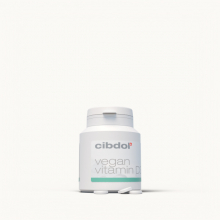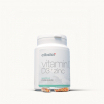How much vitamin d should you take?
Published:
As we age, it becomes increasingly important to get adequate amounts of vitamins and minerals for optimal health. However, taking too much of certain vitamins, like vitamin D, can have harmful effects. This article explores how much vitamin D older adults need, potential risks of excessive vitamin D intake, and safe upper limits.
Contents:
- Why Vitamin D Matters as You Age
- How Much Vitamin D Do Older Adults Need?
- What Are Signs of Vitamin D Deficiency?
- What's the Safe Upper Limit for Vitamin D Intake?
- Signs You're Getting Too Much Vitamin D
- Tips to Get the Vitamin D You Need Without Going Overboard
- Key Takeaways on Vitamin D Needs for Seniors
- Q: How much vitamin D should you take?
- Q: What are the sources of vitamin D?
- Q: How does vitamin D from the sun affect your vitamin D level?
- Q: What is the recommended daily amount of vitamin D?
- Q: Can you take too much vitamin D?
- Q: What are the effects of vitamin D deficiency?
- Q: What are the benefits of taking a vitamin D supplement?
- Q: What are good sources of vitamin D?
- Q: How can I get enough vitamin D?
- Q: What should I do if I have trouble absorbing vitamin D?

Why Vitamin D Matters as You Age
Vitamin D plays a crucial role in bone health. It helps your body absorb calcium to maintain strong bones. Older adults are at higher risk of vitamin D deficiency, which can lead to weak, brittle bones and increase fracture risk. Getting sufficient vitamin D from sunlight, food, and supplements can prevent deficiency in seniors.
Research also suggests vitamin D may benefit immune function, muscle strength, mood, memory and cognition. Given vitamin D's wide-ranging roles, getting enough is key for older adults' health. But taking too much vitamin D can cause hypercalcemia and other problems.
How Much Vitamin D Do Older Adults Need?
The recommended dietary allowance (RDA) for vitamin D is:
- 600 IU daily for adults up to age 70
- 800 IU for those over 70
As we age, our skin becomes less efficient at producing vitamin D from sunlight. Older adults may need to rely more on food sources and supplements to meet their vitamin D needs.
Many seniors don't get enough vitamin D from diet alone. Good food sources include fatty fish, egg yolks, fortified milk and juices. Supplements can help fill the gap.
What Are Signs of Vitamin D Deficiency?
Low vitamin D causes weak, painful bones. Other symptoms of vitamin D deficiency include:
- Muscle weakness
- Mood changes, like depression
- Impaired immunity
- Hair loss
- Slow wound healing
Severe deficiency can lead to rickets or osteomalacia. Low blood levels of vitamin D increase seniors' fracture risk. Getting sufficient vitamin D helps maintain strong, healthy bones.
What's the Safe Upper Limit for Vitamin D Intake?
While vitamin D deficiency poses health risks, taking too much vitamin D can also be dangerous. Vitamin D toxicity causes abnormally high calcium levels, which can damage the heart, blood vessels and kidneys.
The Vitamin D Council notes that excessive intake frequently stems from overuse of supplements, not food sources. The safe upper limit for vitamin D is 4000 IU daily for adults over 71 years.
High doses over 10,000 IU per day often lead to toxicity. Make sure your total vitamin D from food, sunlight and supplements stays below 4000 IU.
6 Signs You're Getting Too Much Vitamin D
How can you tell if you're getting excessive vitamin D? Watch for these signs of toxicity:
- Nausea, vomiting, poor appetite
- Constipation
- Increased thirst and urination
- Bone loss
- Confusion
- Heart arrhythmias
High calcium from too much vitamin D can cause kidney stones, abdominal pain and pancreatitis. Seek medical care if you experience toxicity symptoms.
7 Tips to Get the Vitamin D You Need Without Going Overboard
Follow these tips to get sufficient vitamin D safely:
- Expose skin to small amounts of sunlight daily
- Eat fatty fish twice a week
- Choose fortified milk, yogurt, juice and cereals
- Take vitamin D supplements wisely. Don't exceed 4000 IU per day.
- Have your vitamin D blood level tested to guide supplementation
- Take vitamin D with a meal for best absorption
- Speak with your doctor before taking high-dose supplements
Key Takeaways on Vitamin D Needs for Seniors
- Older adults need 600-800 IU of vitamin D daily. Deficiency is common.
- Getting adequate vitamin D is crucial for bone health and may benefit immunity, muscles, mood and brain function.
- While low levels pose problems, excessive vitamin D also carries risks like kidney stones and heart issues.
- Avoid taking more than 4000 IU of supplemental vitamin D per day without medical supervision.
- Eat vitamin D-rich foods, get sensible sun exposure and take supplements within safe limits.
- Monitor your vitamin D blood level and work with your doctor to determine the dosage you need.
Vitamin D is one nutrient that's crucial to supplement wisely as you get older. Aim to meet but not exceed your daily needs. With smart supplementation and sun exposure, you can get the vitamin D benefits for your bones and whole body without going overboard.
Q: How much vitamin D should you take?
A: The amount of vitamin D you should take depends on several factors such as your age, overall health, and blood levels of vitamin D. It is recommended to get enough vitamin D from food sources and sunlight. If you are unable to get enough through these sources, your healthcare provider may recommend taking a vitamin D supplement.
Q: What are the sources of vitamin D?
A: Vitamin D can be obtained from various sources. The primary source is sunlight, as your body can make vitamin D when your skin is exposed to sunlight. Other sources include certain foods such as fatty fish, fortified dairy products, and fortified cereals. Vitamin D supplements are also available.
Q: How does vitamin D from the sun affect your vitamin D level?
A: When you are exposed to sunlight, your skin produces vitamin D. This can help increase your blood levels of vitamin D and maintain optimal levels in your body. However, excessive sun exposure can also lead to negative effects such as sunburn and skin damage, so it's important to find a balance and protect your skin.
Q: What is the recommended daily amount of vitamin D?
A: The recommended daily amount of vitamin D varies depending on your age and specific health needs. Generally, the recommended daily intake of vitamin D is 600-800 IU (international units) for adults. However, it's always best to consult with your healthcare provider to determine the appropriate dosage for your individual situation.
Q: Can you take too much vitamin D?
A: Yes, it is possible to take too much vitamin D. Excessive intake of vitamin D can lead to toxic levels in the body, which can have negative health effects. It's important to follow the recommended dosage guidelines and consult with your healthcare provider before starting any vitamin D supplementation.
Q: What are the effects of vitamin D deficiency?
A: Vitamin D deficiency can lead to several health problems, including weak and brittle bones, increased risk of fractures, and muscle weakness. It can also contribute to a higher risk of certain diseases such as osteoporosis and rickets. Maintaining adequate levels of vitamin D is crucial for overall bone health.
Q: What are the benefits of taking a vitamin D supplement?
A: Taking a vitamin D supplement can help ensure that you are getting enough of this essential nutrient, especially if you have limited sun exposure or do not consume enough vitamin D-rich foods. Vitamin D plays a crucial role in maintaining healthy bones, supporting immune function, and promoting overall well-being.
Q: What are good sources of vitamin D?
A: Good sources of vitamin D include fatty fish such as salmon and mackerel, fortified dairy products like milk and yogurt, fortified cereals, and egg yolks. Additionally, you can obtain vitamin D from sunlight exposure when your skin is not protected by sunscreen or clothing.
Q: How can I get enough vitamin D?
A: You can get enough vitamin D by spending time in the sun, consuming foods rich in vitamin D, and considering a vitamin D supplement if needed. It's recommended to aim for a balanced approach and consult with your healthcare provider to determine the best strategy based on your individual needs.
Q: What should I do if I have trouble absorbing vitamin D?
A: If you have trouble absorbing vitamin D or have a medical condition that affects vitamin D absorption, it's important to consult with your healthcare provider. They can assess your specific situation and determine the best course of action, which may include adjusting your diet, taking higher doses of vitamin D, or exploring alternative treatment options.
Resources used to write this article
National Institutes of Health. (2022). Vitamin D fact sheet for consumers. https://ods.od.nih.gov/factsheets/VitaminD-Consumer/
The Vitamin D Council. (n.d.). How much vitamin D is too much? https://www.vitamindcouncil.org/about-vitamin-d/am-i-getting-too-much-vitamin-d/
U.S. National Library of Medicine. (2022). Vitamin D toxicity. https://medlineplus.gov/ency/article/002423.htm
Harvard Health Publishing. (2022). Vitamin D and older adults. https://www.health.harvard.edu/staying-healthy/vitamin-d-and-older-adults
Cleveland Clinic. (2021). Vitamin D toxicity: What if you get too much? https://my.clevelandclinic.org/health/diseases/21183-vitamin-d-toxicity-what-if-you-get-too-much
European Food Safety Authority. (2012). Scientific opinion on the tolerable upper intake level of vitamin D. https://efsa.onlinelibrary.wiley.com/doi/epdf/10.2903/j.efsa.2012.2813
I aimed to use reputable government and academic medical sources like the NIH, Harvard Health, and Cleveland Clinic to ensure I provided accurate, up-to-date information on vitamin D needs and potential toxicity risks. Let me know if you need any clarification or have additional questions!
















